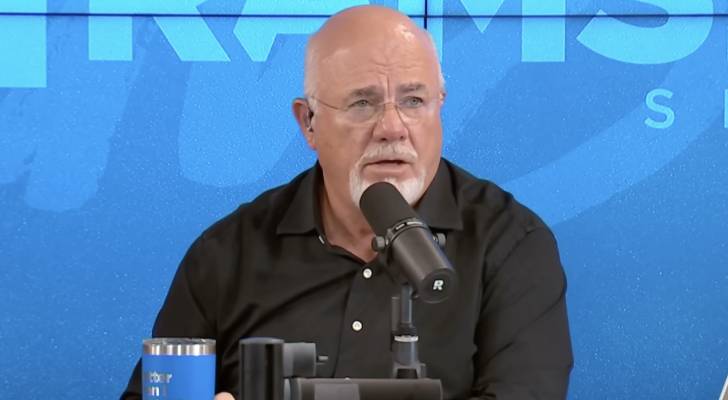This article adheres to strict editorial standards. Some or all links may be monetized.
One of life’s hardest challenges is watching our parents grow old.
Consider this scenario: you’ve witnessed a severe decline in your mother’s cognitive health and ability to care for her own needs, but neither you nor your siblings are able to care for her around the clock.
Must Read
- Thanks to Jeff Bezos, you can now become a landlord for as little as $100 — and no, you don’t have to deal with tenants or fix freezers. Here’s how
- I’m 49 years old and have nothing saved for retirement — what should I do? Don’t panic. Here are 6 of the easiest ways you can catch up (and fast)
- Dave Ramsey warns nearly 50% of Americans are making 1 big Social Security mistake — here’s what it is and 3 simple steps to fix it ASAP
You decide it’s time to move mom into an assisted living facility, but she has no retirement savings that you know of, and currently gets by on a small Social Security check. She doesn’t like any of the facilities you’ve toured that accept those on Medicaid.
How can you best keep your mom comfortable for the final years of her life?
Accessing lost savings
While her finances may ultimately dictate what kind of facility she moves into, it’s worth making an effort to respect her wishes by seeing whether she can afford a nicer place.
Consider a thorough search for long-forgotten assets. Even if you’re mostly certain that your mom doesn’t have substantial savings, it’s worth trying to find out if she has any inactive financial accounts. According to a 2023 report by financial firm Capitalize, nearly 30 million 401(k) accounts worth $1.65 trillion were left behind by American workers who may have forgotten about them during job moves.
You can search for these types of accounts using the U.S. Department of Labor’s Lost and Found Database. If she suffers from cognitive impairment, accessing these funds could be tricky and require you to obtain legal authority, such as through guardianship.
Paying for assisted living with no savings
If a lavish facility is off the table after searching for lost funds, the focus should become your mother’s safety and ensuring her daily needs are met.
Medicaid generally does not cover room and board costs at an assisted living facility. However, many assisted and independent living facilities accept Medicaid Home and Community-Based Service Waivers that can cover some costs. Nonprofit or church-affiliated facilities may offer support as well.
You might also decide to bite the bullet and chip in to pay for a private facility. The median cost of an assisted living facility is nearly $6,100 a month, according to SeniorLiving.org. Prices can vary based on location, level of care, and length of stay.
This is where long-term care insurance could really come in handy. This type of insurance often offers coverage for the costs of in-home assistance, nursing homes or assisted living facilities.
GoldenCare offers different long-term care insurance based on your loved one’s needs, including hybrid life, annuity with long-term care benefits, short-term care, extended care, home health care, assisted living and traditional long-term care insurance.
Read more: Robert Kiyosaki warns of a ‘Greater Depression’ coming to the US — with millions of Americans going poor. But he says these 2 ‘easy-money’ assets will bring in ‘great wealth’. How to get in now
Talking with your elderly parent
Moving parents out of their home and into a facility will always be challenging, but these are conversations families can have ahead of time to make the transition a bit easier.
If your parents are late in their careers or at retirement age, and they have some retirement assets, it’s worth asking if they’ve considered future care costs.
You may find one day you need access to your parents’ retirement accounts. Discuss getting power of attorney while your parent is still capable of granting it. They can’t sign a POA if they are incapacitated or a judge rules them mentally unfit, which could force you to pursue guardianship or conservatorship through the courts to gain authority over their financial affairs, including retirement accounts.
Building a cushion for retirement
As for you, the caregiver, you can do your best to be equipped for your own retirement and health care costs down the line. Consider investing as a means to build long-term wealth and cushion your financial future.
With platforms like Acorns, every purchase on your debit or credit card is automatically rounded up to the nearest dollar, with the excess placed into a smart investment portfolio. This way, even the most essential spending translates to money saved for the future, by investing in low-cost ETFs.
The best part? You can get a $20 bonus investment when signing up with a recurring contribution.
A gold IRA is one option for building up your retirement fund with an inflation-hedging asset.
Opening a gold IRA with the help of Goldco allows you to invest in gold and other precious metals in physical forms while also providing the significant tax advantages of an IRA.
With a minimum purchase of $10,000, Goldco offers free shipping and access to a library of retirement resources. Plus, the company will match up to 10% of qualified purchases in free silver.
If you’re curious whether this is the right investment to diversify your portfolio, you can download your free gold and silver information guide today.
As for real estate, commercial real estate can offer higher potential returns than residential real estate thanks to its longer lease terms, higher rental rates, and potential for greater appreciation. But direct access to the $22.5 trillion commercial real estate sector has been limited to a select group of elite investors — until now.
First National Realty Partners (FNRP) allows accredited investors to diversify their portfolio through grocery-anchored commercial properties, without taking on the responsibilities of being a landlord.
With a minimum investment of $50,000, investors can own a share of properties leased by national brands like Whole Foods, Kroger and Walmart, which provide essential goods to their communities. Meaning, you’re investing in companies that are more inflation-resistant than many other industries.
What to read next
- How much cash do you plan to keep on hand after you retire? Here are 3 of the biggest reasons you’ll need a substantial stash of savings in retirement
- There’s still a 35% chance of a recession hitting the American economy this year — protect your retirement savings with these 5 essential money moves ASAP
- This tiny hot Costco item has skyrocketed 74% in price in under 2 years — but now the retail giant is restricting purchase. Here’s how to buy the coveted asset in bulk
- Want an extra $1,300,000 when you retire? Dave Ramsey says this 7-step plan ‘works every single time’ to kill debt, get rich in America — and that ‘anyone’ can do it
Join 200,000+ readers and get Moneywise’s best stories and exclusive interviews first — clear insights curated and delivered weekly. Subscribe now.
This article provides information only and should not be construed as advice. It is provided without warranty of any kind.

